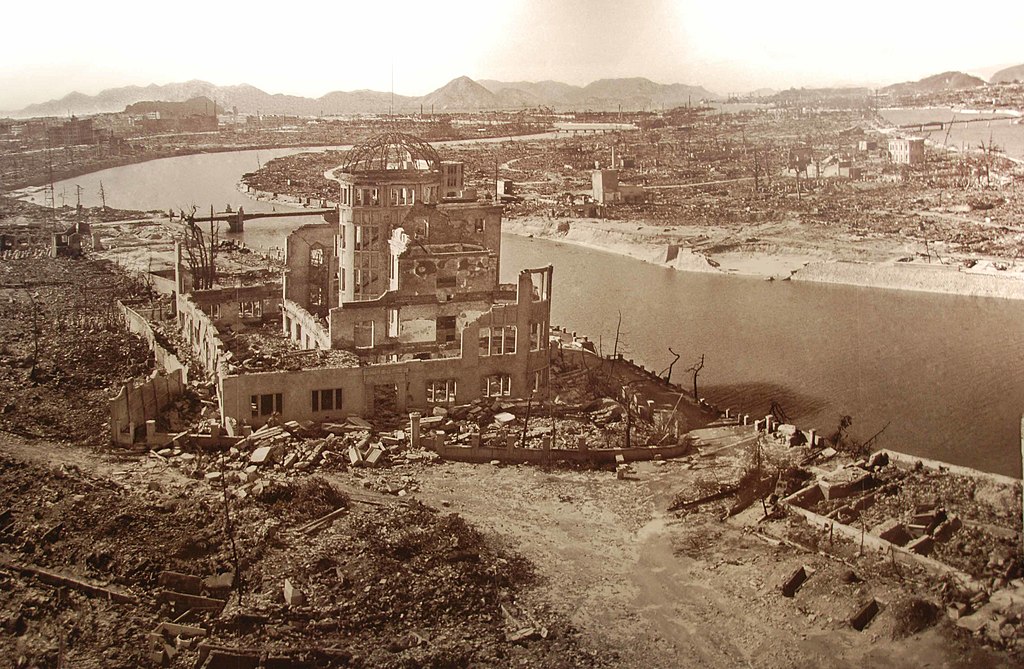It’s telling that the Oppenheimer movie stays safely in the United States. There’s the direct vision of the Trinity test bomb, but the carnage of Hiroshima and Nagasaki is talked about but not seen. Such delicacy protects the audience, but it struck this viewer as essentially one-sided.
Any attempt to depict the fate of the Japanese cities and their 300,000 dead would have derailed the movie’s plotline. The troubles of Oppenheimer in the war’s aftermath at the hands of McCarthyist anti-communists would have seemed inconsequential. The actual bombing would have driven a movie about the team leader that invented it off course. Including the bombing of the Japanese cities would mean the film was no longer centred on Oppenheimer.
The bombing of Hiroshima and Nagasaki remains obscene, and maybe that was a good reason to leave them out of that movie. It could be seen as exploitative of human suffering. But they are embedded in our lives. We live in the aftermath of a terrible event.
Christians have long struggled with the decision of Harry Truman; the President faced with terrible choices. Did the bombing fit within Christian just war thinking?
A just war requires
• A just cause: the Pacific theatre of World War II involved the attack on Pearl Harbor and the liberation of Korea, Manchuria and other areas occupied by Japan, an oppressive empire. Defence against this attack provided an arguable just cause.
• A right intention: fighting Japan across the Pacific and the Asian mainland back towards Japan’s home archipelago was a liberating war. But a question comes with the call for unconditional surrender, which led to the choice of bombing or a bloody invasion. Was insisting on unconditional surrender necessary?
• Due proportionality: arguable the bombing was proportional to a fighting invasion. One study, reported in a Washington Post analysis, suggests “Chinese and southeast Asians, who were already dying at the rate of 250,000 a month under the brutal conditions of Japanese occupation.” Bombing Japanese cities with conventional weapons had caused equivalent numbers of deaths. An invasion or blockade of Japan would have produced many more civilian deaths.
A story is told of an elderly Japanese man visiting the Hiroshima and Nagasaki exhibit at the Smithsonian Museum, and on being asked about it, said the bombing saved his life. The same might apply to my Japanese birth mother, Toshiko.
• The last resort: Short of leaving Japan alone after driving them back to their home islands, the allies did have other options, but as we have seen, in a strange equation, the bombing can be said to have saved lives.
• Legitimate targets: Hiroshima and Nagasaki were selected because they were relatively untouched targets. This is a questionable aspect of the bombing as it may mean they had low military value.
• Avoiding Intrinsically unethical means: the mass bombing of civilian targets was protested by many Christians during WWII. For example, Anglican Bishop George Bell has been described as “Britain’s most unpopular prelate” during the war for his attacks on the bombing war on Germany. Hiroshima and Nagasaki rank alongside Dresden and Coventry, cities destroyed by firestorms.
• Restoring the Status quo ante bellum: things should be restored after war. Walking through Hiroshima, a bustling city today, it seems a typical Japanese city until one comes to the Aioi Bridge over the river junction that was the aiming point for the bomb, and you encounter the Hiroshima Memorial. The physical scar remains in the city’s landscape and the population.
In this piece, I have not tried to solve the Hiroshima dilemma. But it’s worth noting that the anti-nuclear war protest movement has become a whisper of what it was when Reagan and Gorbachev signed anti-missile treaties – arguably influenced by mass protests. (The Intermediate-Range Nuclear Forces (INF) Treaty was the first in which the United States and the Soviet Union agreed to reduce their nuclear stockpile by removing a class of weaponry.)
Today let us pause and remember the destructive ability humanity achieved in the twentieth century and pray that it will never be used again.
A prayer prepared by the Australian Catholic Office for Social Justice.”
Lord of all creation, make us instruments of your peace.
Let us learn the lessons of the past and put an end to nuclear weapons. Where there is hatred, let us sow love.
May our love for each other and for all of your creation
leave no place for making or owning weapons of mass destruction. Where there is injury, let us be bearers of your healing and pardon.
May we create paths to dialogue, understanding and reconciliation. Where there is doubt, let us foster faith in you.
May we let the weapons fall from our hands and know that you are God. Where there is despair, let us hold up hope.
May our lives reflect your love in the face of violence,
knowing that love is stronger than death.
Where there is darkness, let us be bearers of your light.
May our choices show that peace is possible.
Where there is sadness, let us bring the joy of the Gospel.
Amen.
Image: The complete destruction brought about by the atomic bomb on August 6 1945, at exactly 8:15 am.

